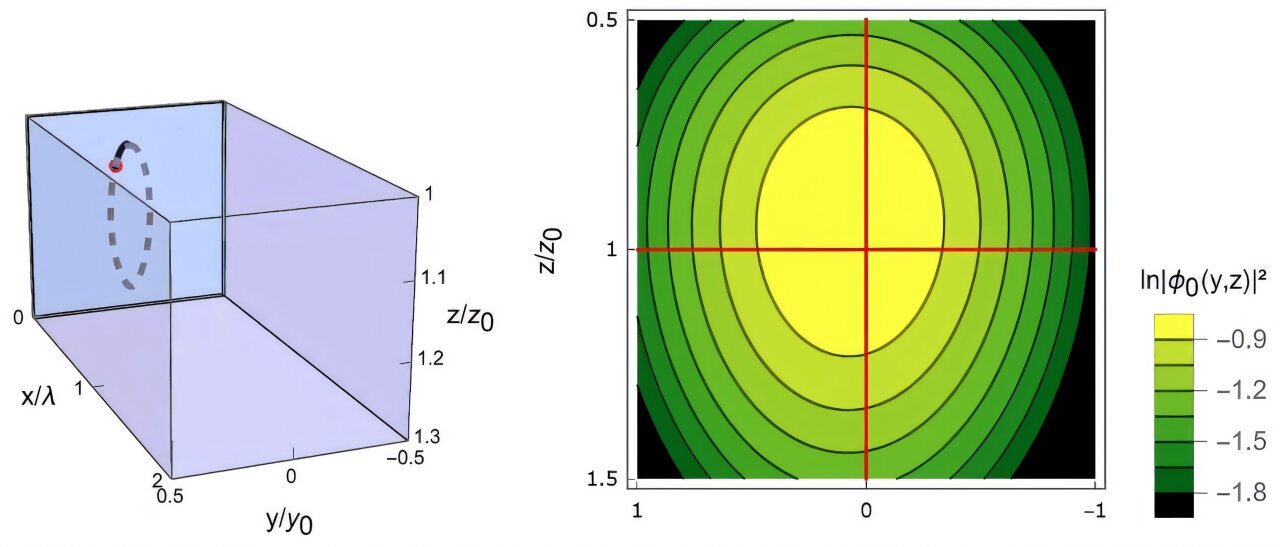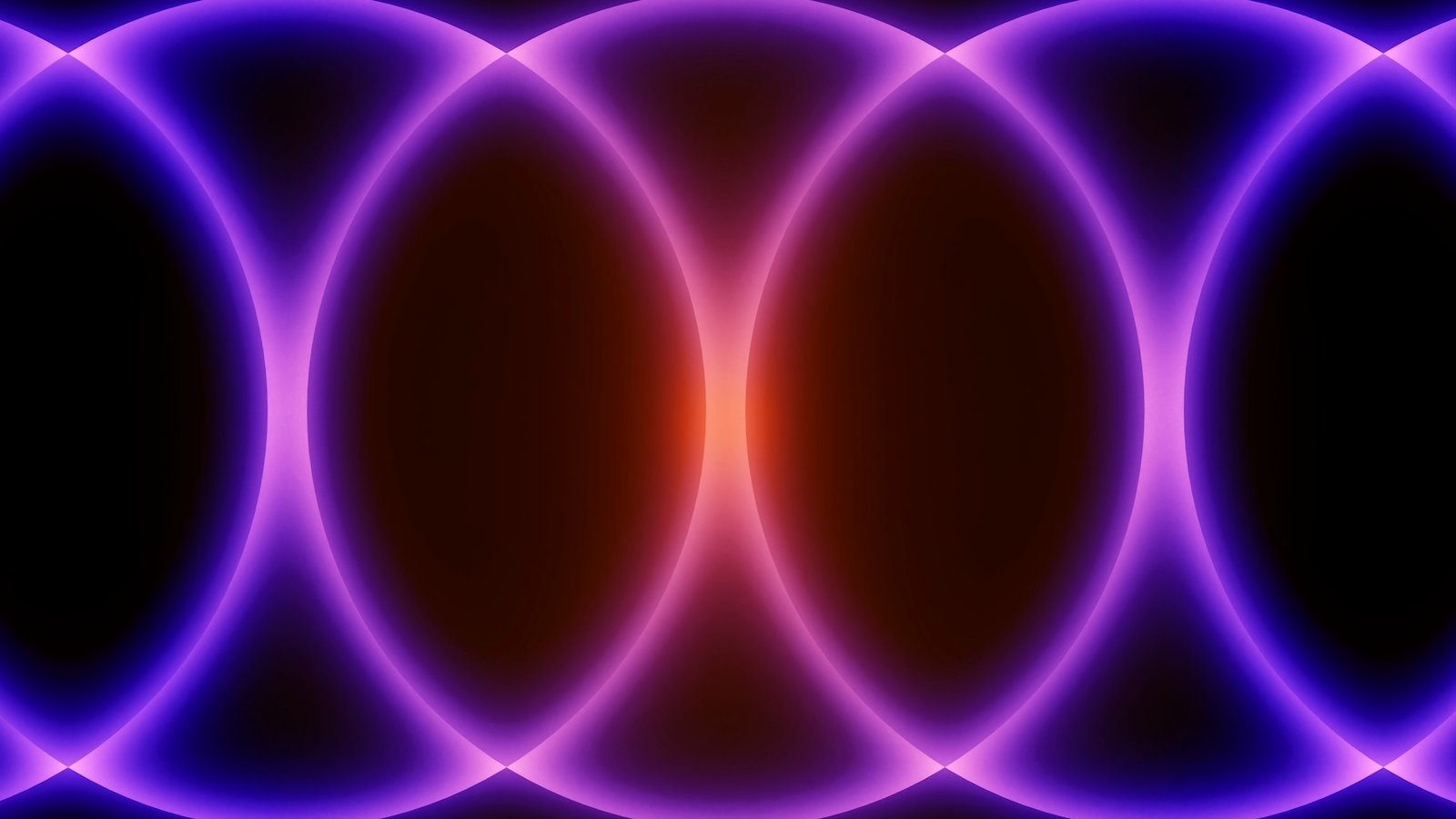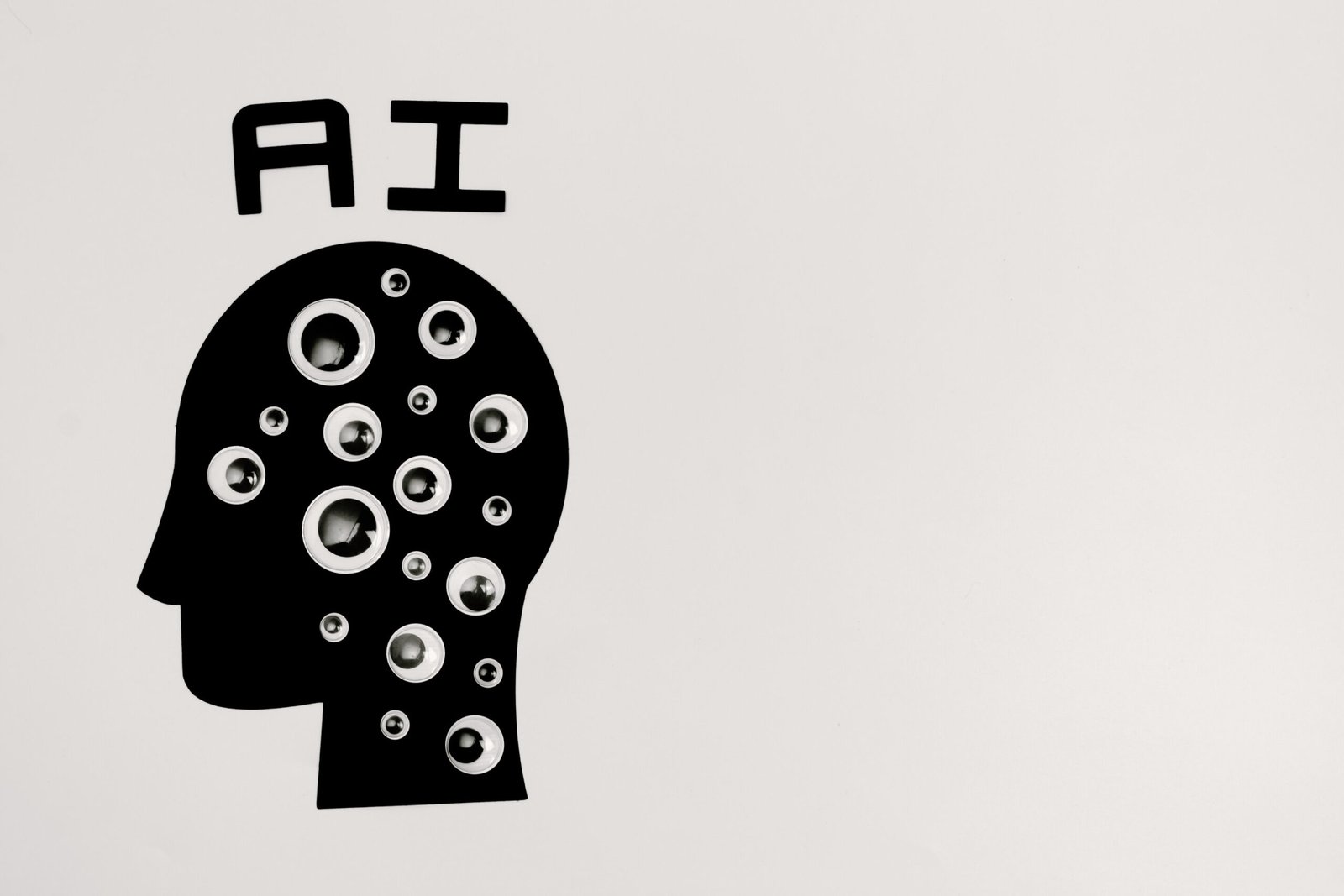
A new platform for engineering chiral electron pathways offers potential fresh insights into a quantum phenomenon discovered by chemists—and exemplifies how the second quantum revolution is fostering transdisciplinary collaborations that bridge physics, chemistry, and biology to tackle fundamental questions.
In the late 1990s, Ron Naaman at the Weizmann Institute and David Waldeck at the University of Pittsburgh were investigating how electrons scatter from chiral molecules. Previous gas-phase experiments had shown tiny asymmetries—less than 0.01%—when spin-polarized electrons encountered left- or right-handed molecules. The effect was so small that many dismissed it as unimportant.
But in 1999, the two researchers tried something different. Instead of isolated molecules in the gas phase, they created organized films of chiral molecules and measured how photoelectrons scattered as they passed through.
The results were startling: the asymmetry jumped to 10–20%, more than a thousand times larger than anyone had expected. Electrons with different spin orientations showed dramatically different transmission probabilities through the chiral films.
Their discovery launched a field that continues to puzzle researchers more than two decades later. This chiral-induced spin selectivity (CISS) effect appears throughout biology, from the charge separation in photosynthesis to the electron transport chains that power cellular respiration. Yet despite extensive experimental and theoretical work, the mechanism remains poorly understood.
The observation defied conventional wisdom in multiple ways. Biological molecules are warm, wet, and noisy—hardly the pristine conditions where delicate quantum effects typically survive. Moreover, the molecules where CISS occurs are often much longer than the distance over which electron spins normally maintain their orientation.
Yet somehow, these biological systems appear to filter electrons based on a purely quantum property that has no classical analog.
The CISS effect has profound implications for understanding quantum transport through chiral molecular systems. The phenomenon appears across a range of chiral molecules and materials, raising fundamental questions about the relationship between molecular geometry and electron spin that span chemistry, physics, and biology.
But despite more than two decades of intensive research by chemists and physical chemists, the fundamental mechanism remains elusive, largely because researchers lacked tools to systematically study quantum transport in controllable chiral systems with the precision that theoretical understanding requires.
Now, a team led by Jeremy Levy at the University of Pittsburgh has developed what amounts to a programmable platform for quantum chirality that could provide new approaches to explore interacting electrons in chiral systems. The study is published in the journal Science Advances.
Working with the oxide interface between lanthanum aluminate and strontium titanate, they can sculpt electron pathways into arbitrary spiral geometries at the nanoscale, creating artificial chiral systems where every parameter can be precisely controlled. Their results reveal surprising quantum phenomena and offer new routes to explore the underlying mechanisms behind effects such as CISS.
The challenge of interacting quantum systems
The difficulty in uncovering the mechanisms behind CISS exemplifies the wider challenge of understanding interacting quantum systems.
Interacting electrons are central to quantum chemistry and materials, including understanding high-temperature superconductors and magnetic materials; developing industrial catalysts and battery cathodes; as well as drug discovery. However, understanding electron behavior in interacting quantum systems is notoriously difficult in general.
These are complex systems in which the underlying dynamical processes with interacting electrons are often not well understood, and in most cases even simple models are not solvable via conventional techniques.
In particular, the equations that govern many-body quantum mechanics become exponentially complex as the number of particles grows.
This is where the field of analog quantum simulation has emerged as a powerful alternative. Rather than trying to solve the equations directly, researchers create artificial, controllable (or even programmable) quantum systems that mimic the physics they want to understand.
If you want to study electrons in a particular type of crystal lattice structure, you build that lattice artificially and measure what happens. This is a complementary approach that relies on control over microscopic systems being developed as part of the second quantum revolution, and stands as an alternative approach to quantum computing.
An analogy from classical physics is the use of scale models in wind tunnels to study aerodynamics, which is often possible in regimes where computational modeling is challenging.
The approach has yielded notable successes, particularly with ultracold atomic gases trapped in optical lattices and tweezer arrays, but also with connected superconducting systems. These have realized exotic phases including spin liquids, and have been used to explore some of the underpinning dynamics.
More recently, the discovery of moiré patterns in twisted van der Waals materials has opened new routes for engineering quantum states. When two-dimensional materials like graphene are stacked with a small relative twist, the resulting superlattice can dramatically modify electronic properties. But these systems, while revolutionary, offer limited control over the specific geometries that can be realized.
A transdisciplinary approach to interacting chiral systems
It is in this context that the Pittsburgh team have built their controllable system to explore chiral dynamics—a collaboration that brings together expertise from condensed matter physics, materials science, and quantum theory.
Their work doesn’t attempt to replicate the exact conditions of molecular CISS—doing so would be nearly impossible given the vast differences between engineered solid-state systems and biological molecules. Instead, it offers something that is potentially valuable in a different way: a controlled environment to test specific theoretical predictions about how chirality might influence quantum transport.
“The beauty of this approach is not that it mimics chemistry or biology exactly, but that it allows us to isolate and study individual processes that are relevant in chiral quantum transport,” explains theoretical physicist François Damanet at the University of Liège, who helped develop the theoretical framework.
“We can systematically vary parameters like the pitch, amplitude, and coupling strength of chiral modulations—something impossible with fixed structures.”
This controlled approach addresses a fundamental challenge in this research area. While molecular systems offer the complexity of real biology, they also present a tangled web of variables: conformational dynamics, vibrational modes, environmental fluctuations, and chemical specificity all contribute simultaneously.
Disentangling which factors drive spin selectivity requires systems where parameters can be varied independently—a challenge that would benefit from combining insights across physics, chemistry, and materials science.
In the future, this offers the potential to test theoretically proposed mechanisms for spin-selective transport under controlled conditions. Several theories suggest that spin-orbit coupling induced by chiral geometry could explain molecular spin selectivity.
The Pittsburgh system creates such coupling artificially, allowing researchers to measure its effects without the complications of molecular vibrations, chemical disorder, or environmental fluctuations.
The artificial chiral systems also operate in parameter regimes that complement molecular studies. Where molecular CISS typically involves short-range, strong coupling between electrons and localized molecular orbitals, the engineered waveguides explore longer-range, weaker coupling between extended electronic states.
Both regimes may be important for understanding the full scope of chiral quantum transport. The platform’s programmable nature means that it can test specific theoretical predictions about how transmission should depend on system parameters, validate theoretical frameworks under controlled conditions, and inspire new theoretical approaches based on observed phenomena like enhanced electron pairing and novel interference effects.
Engineering chirality
The Pittsburgh team’s approach builds on a technique the Levy group pioneered in 2008: using a conductive atomic force microscope (c-AFM) tip to “write” electronic circuits at the oxide interface between lanthanum aluminate (LaAlO3) and strontium titanate (SrTiO3).
A positively biased tip locally switches the interface from insulating to conductive, while a negative bias restores the insulating state. The result is a system where electronic pathways can be sketched with nanometer precision.
But creating truly chiral structures required going beyond simple line drawing. The team developed a technique that combines two types of modulation: laterally, the AFM tip follows a serpentine path, creating a sinusoidal variation in the electron’s confinement.
Simultaneously, they modulate the tip voltage sinusoidally as they write, creating vertical variations in the confining potential. When these two modulations are phase-shifted by 90 degrees, the result breaks mirror symmetry—the mathematical signature of chirality.
The technique represents an advance in quantum control. Rather than being constrained by the symmetries of natural materials, the researchers can now create arbitrary chiral geometries and systematically vary parameters like pitch, radius, and coupling strength. Most importantly, the same device can be erased and rewritten with different patterns, enabling controlled studies that would be impossible with conventional materials.
Quantum surprises
The engineered chiral waveguides revealed phenomena that surprised even their creators. Most notably, the team observed enhanced electron pairing that persists to magnetic fields as high as 18 Tesla—about 360,000 times Earth’s magnetic field. In similar but straight waveguides, such pairing typically breaks down at much lower fields.
Even more intriguing were oscillations in the electrical conductance that depended on both the magnetic field strength and the electron energy. These oscillations had amplitudes exceeding the fundamental quantum of conductance and showed patterns that suggested a new type of quantum interference.
To understand these observations, the team developed theoretical models that treat the chiral modulations as creating an effective axial magnetic field through spin-orbit coupling—a quantum effect where an electron’s motion influences its spin orientation. This engineered coupling appears to lock electron spins to their momentum, a phenomenon that mirrors theoretical proposals for the CISS mechanism.
The theoretical analysis suggests that electrons traveling through the chiral region can exist in both singlet and triplet paired states—singlet pairs have antiparallel spins (total spin S=0) while triplet pairs have parallel spins (total spin S=1)—with the spin-orbit interaction causing coherent oscillations between these paired configurations. Only the singlet pairs can be transmitted through the leads, leading to the observed conductance oscillations.
Limitations and future directions
The Pittsburgh team is careful to acknowledge the limitations of their approach. The engineered chiral systems operate at millikelvin temperatures rather than room temperature, use inorganic rather than organic materials, and involve extended electronic states rather than the localized molecular orbitals typical of biological systems. These differences mean that the physics may not directly translate to molecular CISS.
However, the researchers argue that understanding chiral quantum transport in any controlled system provides valuable insights. Many fundamental quantum phenomena, from superconductivity to the quantum Hall effect, were first understood in simplified model systems before their relevance to complex materials became clear.
In addition, there are aspects of the microscopic dynamics of the LaAlO3/SrTiO3 platform that are still not fully understood. But again, these types of analyses have the potential to provide invaluable insight into the materials that create the platform itself.
Separate future work will also aim to bridge the gap between the platform and molecular chemistry more directly. The team is developing hybrid systems that combine the programmable oxide platform with organic materials, potentially allowing them to study molecular transport in engineered chiral potentials. They’re also exploring ways to operate at higher temperatures and in more complex electromagnetic environments.
The approach is now evolving toward dissociating the programmable layer from the electronic system under study. The researchers are developing hybrid analog quantum simulators that combine the programmable LaAlO3/SrTiO3 platform with carbon nanotubes.
In these systems, the oxide interface serves as the programmable layer that creates chiral potentials, while the carbon nanotube acts as a separate electronic system where quantum transport occurs—essentially teaching straight nanotubes to behave like spiral ones.
This separation of the programming platform from the transport medium offers new levels of control over the coupling between geometry and electronic properties, and could eventually allow for studies of molecular CISS under more controlled conditions.
Programming quantum matter
The work exemplifies a broader transformation in condensed matter physics. Traditional materials science focused on discovering compounds with interesting properties.
Recent advances in twisted van der Waals materials shifted attention toward engineering properties through careful assembly. Now, the field is moving toward true programming of quantum matter, where arbitrary Hamiltonians can be realized through designed potentials.
For the CISS community, this programmable approach offers new experimental tools that complement traditional molecular studies. While it may not immediately explain why DNA exhibits spin selectivity, it could help identify which theoretical mechanisms are physically reasonable and which geometric factors are most important for chiral transport.
The platform also creates new opportunities for future dialogue between condensed matter physicists and chemical physicists, potentially fostering collaborations that might not otherwise occur.
The platform’s reconfigurable nature means that systematic studies can probe the parameter space of chiral quantum transport in ways that natural materials cannot allow. As theoretical understanding advances, the system can be reprogrammed to test new predictions and explore different aspects of chiral quantum physics.
Whether the engineered chiral systems will ultimately explain the mysteries of the CISS effect in molecular systems remains to be seen. But they have already revealed that the quantum world of chirality is richer and more controllable than many had imagined.
In a field where theoretical progress often comes slowly, having systems that can be programmed and reprogrammed at will may be the key to unlocking some of quantum mechanics’ most puzzling phenomena.
The goal is not to replace molecular studies but to complement them with a new experimental tool that can isolate and test specific aspects of chiral quantum transport.
By understanding these mechanisms in simplified, controllable systems, researchers may gain insights that prove crucial for understanding the far more complex world of biological quantum transport—demonstrating how insights from solid-state physics can illuminate fundamental questions in chemistry and biology.
More information:
Megan Briggeman et al, Engineered Chirality of One-Dimensional Nanowires, Science Advances (2025). DOI: 10.1126/sciadv.adx4761. www.science.org/doi/10.1126/sciadv.adx4761
Provided by
University of Pittsburgh
Citation:
Quantum spirals: Programmable platform offers new ways to explore electrons in chiral systems (2025, June 13)
retrieved 13 June 2025
from https://phys.org/news/2025-06-quantum-spirals-programmable-platform-ways.html
This document is subject to copyright. Apart from any fair dealing for the purpose of private study or research, no
part may be reproduced without the written permission. The content is provided for information purposes only.




